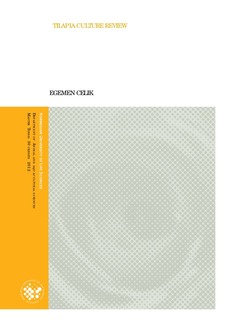| dc.description.abstract | This literature review has been written to examine different tilapia farming
practices both in semi-intensive and intensive systems. Extensive culture is not
mentioned since it is not considered to be a real commercial production as the
control over the system is quite limited and even semi-intensive system is being
replaced by intensive system due to technological developments, high demand
and increasing market prices of tilapia. In first chapter, environmental and
nutritional requirements are also mentioned as they are closely correlated and
play a key role in a successful production. The results of some recent studies and
experiments suggest that tilapia has some superiority over other culture fish like
faster growth, ability to utilize different feeds, wide tolerance for high stocking
densities and environmental conditions. In addition to these advantages, tilapia
do very well in integrated culture systems both with aquatic species; carp and
shrimps, also crops like tomato and lettuce as well. As a result, this study is
conducted to prove the advantages of commercial tilapia production covering
economic values. | no_NO |
